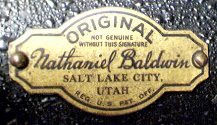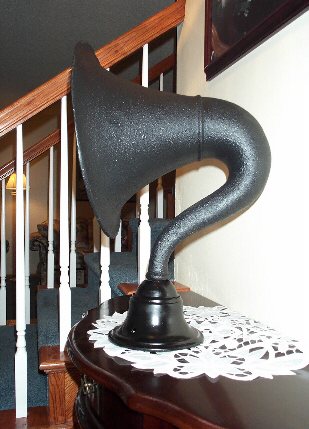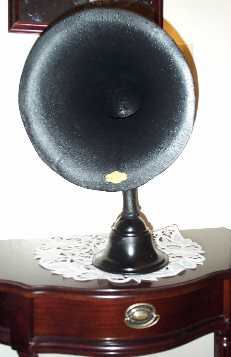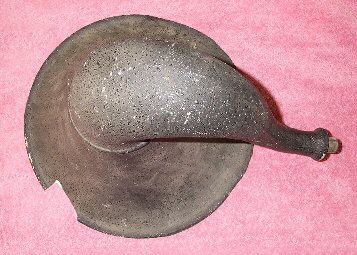

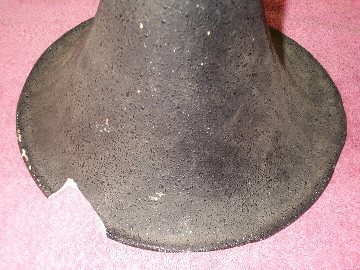
The horn or "bell" was missing a section from the edge.
A mold was made of a "good" section of the rim and used to
pour
a section that was missing.
(see above)
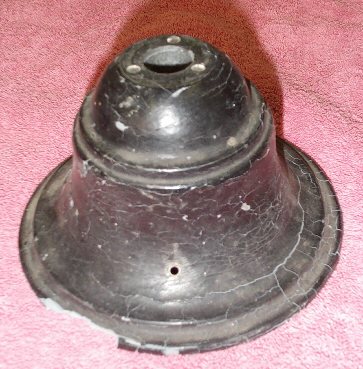
The base had severe cracks that ran all the way through to
the
inside.
In some spots I'm not sure what was holding it together.
The cracks were stabilized by filling with epoxy that was made
for
metal.
The base was "distorted" at the cracks and had to be smoothed
back
down.
The entire base was spun on a lathe to smooth the epoxy and
cracks.
A mold was made of a "good" section of the rim, and was used
to
pour a section of the rim that was missing.
(see photo above)
Results



Interior
The interior was much worse that the exterior.
The coil was "open" (had a break in the windings) and the
armature
was very rusted and could not be saved.
I only regret that I did not take any photos before I started
work.
I was able to save the diaphragm section of the driver which
was
very large (about 3").
I used the interior of a USI military sound powered element to
drive
the diaphragm ("ear" element).
This element was left over from another restoration and it was
missing
a diaphragm, so it was a perfect match !!!
The upper part of the rod connecting them is from a RCA
military
sound powered element.
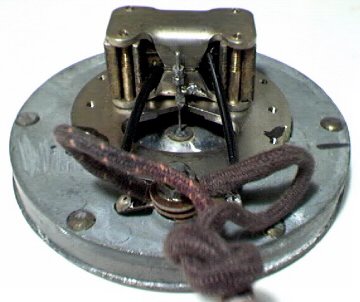

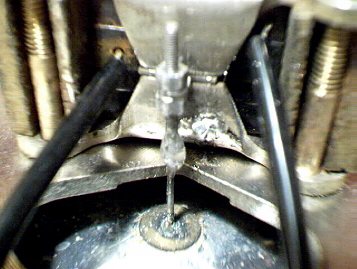


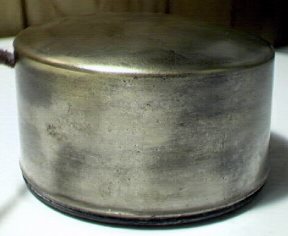
The results were that this horn can now work on a crystal
radio
because
it is much more efficient than the original Balanced Armature
setup.
Not real loud in my area because of a lack of a very strong
local
station, but OK.
It also will work very well with a single tube
battery
radio
such as a Westinghouse Aeriola Senior without an amplifier.
Compleated Horn
